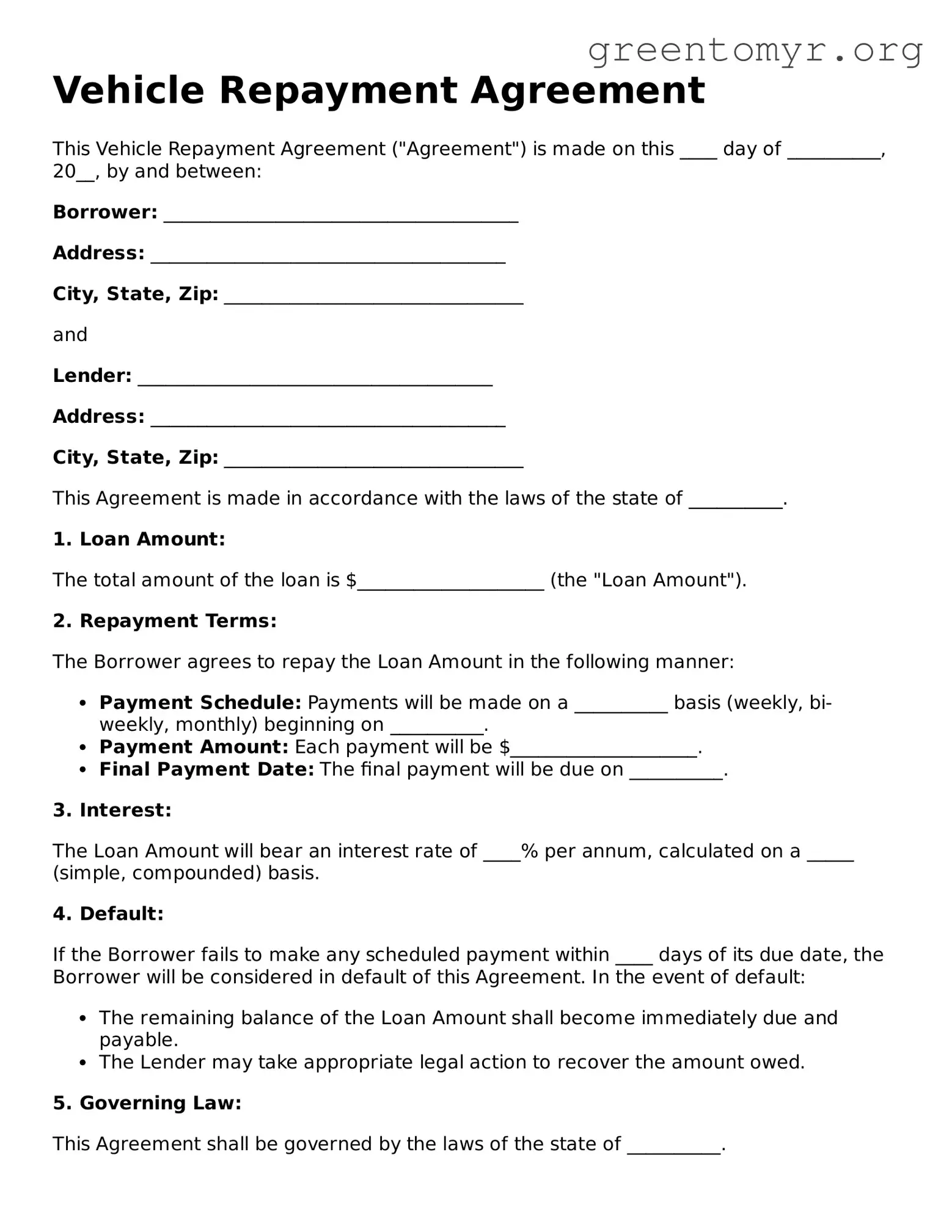Vehicle Repayment Agreement
This Vehicle Repayment Agreement ("Agreement") is made on this ____ day of __________, 20__, by and between:
Borrower: ______________________________________
Address: ______________________________________
City, State, Zip: ________________________________
and
Lender: ______________________________________
Address: ______________________________________
City, State, Zip: ________________________________
This Agreement is made in accordance with the laws of the state of __________.
1. Loan Amount:
The total amount of the loan is $____________________ (the "Loan Amount").
2. Repayment Terms:
The Borrower agrees to repay the Loan Amount in the following manner:
- Payment Schedule: Payments will be made on a __________ basis (weekly, bi-weekly, monthly) beginning on __________.
- Payment Amount: Each payment will be $____________________.
- Final Payment Date: The final payment will be due on __________.
3. Interest:
The Loan Amount will bear an interest rate of ____% per annum, calculated on a _____ (simple, compounded) basis.
4. Default:
If the Borrower fails to make any scheduled payment within ____ days of its due date, the Borrower will be considered in default of this Agreement. In the event of default:
- The remaining balance of the Loan Amount shall become immediately due and payable.
- The Lender may take appropriate legal action to recover the amount owed.
5. Governing Law:
This Agreement shall be governed by the laws of the state of __________.
6. Entire Agreement:
This Agreement constitutes the entire understanding between the parties and supersedes all prior agreements, discussions, or representations.
7. Signatures:
By signing below, both parties agree to the terms set forth in this Vehicle Repayment Agreement.
Borrower’s Signature: ___________________________
Date: _______________________________________
Lender’s Signature: ___________________________
Date: _______________________________________
